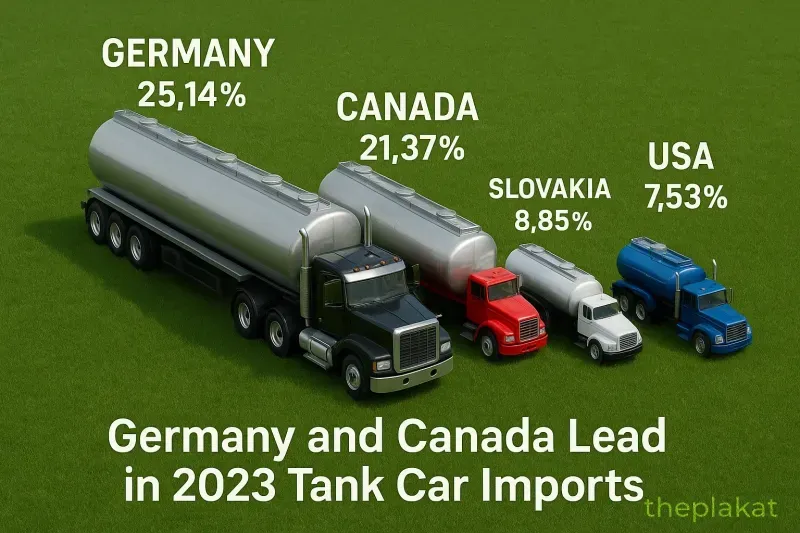Published
in Economy
Germany and Canada are at the forefront of tank car imports in 2023, accounting for nearly half of the global market share. This trend underscores their industrial needs and infrastructural investments.
Tank cars are essential for safely transporting liquids and gases over long distances, crucial to industries such as oil and gas, chemicals, and agriculture. Their design has been optimized for efficiency and safety standards.
In 2023, Germany imported 25.14% of tank cars, making it the top importer globally. Canada followed closely with 21.37%. These figures reflect each country's emphasis on enhancing their industrial transportation infrastructure, likely driven by economic growth and related sectors' expansion.
Slovakia, with 8.85%, and the United States, with 7.53%, also played significant roles in the import market. These countries are part of a broader trend where infrastructure and manufacturing drive demand for tank cars. Mexico's engagement, at 5.96%, further adds to this narrative, indicating a pan-North American investment strategy in efficient logistical solutions.
The rest of the world, including emerging and minor import players, holds a combined share of less than 1% of the market each. These countries contribute quietly but steadily to the global market trends. Understanding these dynamics helps projects future growth areas and shifts in trade relations.

Tank cars are specialized railcars designed for transporting liquids, gases, and powders over long distances, serving industries like petroleum, chemicals, and agriculture.
Germany and Canada were the top importers of tank cars in 2023, with Germany accounting for 25.14% and Canada for 21.37% of global imports.
This data reflects global industrial demand for transportation solutions and highlights economic activities, infrastructure investments, and shifts in logistical needs.